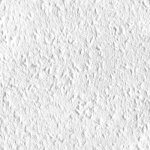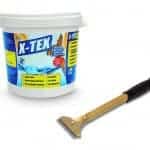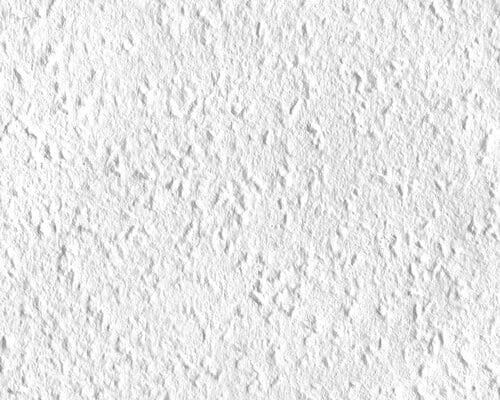Artex, Asbestos & Removing Artex Frequently Asked Questions (FAQ’s)
What is Artex?
Artex is a surface coating which is used for interior decorating. It is most often found on ceilings but sometimes on walls too. Artex allows a professional plasterer or decorator to add texture and patterns to it. The name Artex is a trademark of Artex Ltd, which is a company based in the United Kingdom. The Artex name has become commonly used with all textured coatings, however, there are several other businesses that manufacture and sell similar products.
Where do you find Artex?
You find Artex on ceilings but it can be on walls too. It was very much a trend to have your ceilings or walls covered with Artex in the ’70s and ’80s.
What types of Artex are there?
Artex is a brand name and there are different patterns that can be made using it, some of these include:
- Broken Leather
- Stipple
- Swirl
- Fan or Shell
- Knifed plaster
It can also give just a bobbly raised uneven patterned look all over.
Why would I use Artex?
Artex is used to create raised, textured swirls and patterns on ceilings, and, or walls.
Who uses Artex?
Decorators, mainly plasterers will use Artex. It is a skilled job and difficult to create uninformed patterns if you don’t know how. It was very much in fashion in the ’70s and 80’s so the skill of Artex is very much now a dying trade. People now prefer smooth plastered finishes over Artex, which can be easily painted or wallpapered.
What is the difference between Artex and plaster?
Artex differs from plaster because it is a surface covering intended to give a textured, patterned finish so it enables a wall or ceiling to be finished without fine plastering skills if you don’t want a uniform pattern. It is, however, a skilled trade to ensure you have uniformed patterns and finishes.
What are the benefits of Artex?
Artex creates a textured, normally uniform patterned texture on a ceiling or wall and means that you don’t need the wall or ceiling covering to be perfectly smooth like you would achieve with plaster.
What are the disadvantages of Artex?
Until 2000 Artex and other textured wall coverings contained asbestos which is a dangerous substance. Asbestos is a term for a group of minerals made of microscopic fibres and if the fibres are inhaled it can damage your lungs and cause other serious diseases.
Is Artex harmful and does it all contain asbestos?
 Until the mid-1980s, Artex coating was made with white asbestos to strengthen and harden it. This means that wall and ceiling coverings manufactured by Artex Ltd and other manufacturers at that time will most likely contain asbestos. Artex (the company) stopped using asbestos in the mid-1980s, however, other manufacturers may have continued to use it up until 1999 when the laws around the use of asbestos changed in 2000.
Until the mid-1980s, Artex coating was made with white asbestos to strengthen and harden it. This means that wall and ceiling coverings manufactured by Artex Ltd and other manufacturers at that time will most likely contain asbestos. Artex (the company) stopped using asbestos in the mid-1980s, however, other manufacturers may have continued to use it up until 1999 when the laws around the use of asbestos changed in 2000.
Asbestos is only harmful when it is in a powder form. For example, when it is being sanded and removed, and it normally poses no risk when it is undisturbed. It is always advisable to check with a qualified person or company if you have asbestos in your ceilings or walls if the house was built before 2000 and they will be able to advise you of the best course of action and if it is dangerous. X-Tex is a non-toxic product that easily and safely removes textured ceiling or wall coverings and is used by people doing this themselves and many professional tradespeople.
Can Artex be painted?
Yes, Artex or other similar wall coverings can be painted.
Can Artex be wallpapered?
No, it is best not to wallpaper Artex or other similar textured wall coverings as the raised textures and patterns will show through.
Why was asbestos used in Artex?
Before 2000, Artex and most of the textured coatings contained asbestos particles and these were added as a hardener to the liquid.
Is the asbestos in Artex dangerous?
Whilst the Artex or other manufactured textured wall coatings were wet and being applied, they were harmless. The fibres and dust particles from the coatings are dangerous if they are inhaled and can damage your lungs and cause other serious diseases and you are at most risk of this when sanding them or trying to remove.
‘Artex’ contains low levels of asbestos dust but it can still be dangerous amounts. If you are thinking about removing it yourself or if you have cracks in the textured coating then you should use a reputable person or company who are qualified to remove it or use the X-Tex product which allows the safe removal of textured coatings without causing dust and dust from harmful asbestos fibres.
Even removing more recent non-asbestos textured coatings can expose you to hazardous dust particles. Older coatings which contain asbestos can be a serious hazard to anyone if the microscopic asbestos fibres are inhaled. If you are not using the X-Tex product to remove a wall covering then professional expertise is recommended to identify the presence of asbestos and remove it, only people or companies who are trained to remove coatings with asbestos in should do so.
Removal of the textured wall or ceiling coverings containing asbestos is covered by the UK’s Control of Asbestos Regulations 2012. In many cases, it can fall within exemptions to the licensing requirements so it doesn’t need the use of a licensed contractor, however, it is still advisable.
In cases where the asbestos risk is higher, the regulations make it unlawful for a contractor not licensed by the Health and Safety Executive to undertake the removal or any work close to where the asbestos is. When a textured wall or ceiling surface containing asbestos is removed it must be disposed of as hazardous waste.
Again, if the coating is left alone, undamaged and coated with paint it can be safe to leave it in place but it is always a good idea to seek professional advice on it.
How do I know if there is asbestos in the Artex in my home or business?
The only way to be 100% sure if your Artex textured coating contains asbestos is to have a sample taken and sent off for analysis. You can do this yourself if some of the coating has already broken off, or if there is no chance of the asbestos contaminating a property and use a DIY kit where you can send a piece of the coating off for analysis. We would advise against you drilling or cracking a coating yourself to then send off for analysis as you may expose yourself to the harmful fibres.
We would always advise that you get an accredited person or company to assess if your ceiling or wall coating contains asbestos or use the X-Tex product to safely remove it yourself.
Should I remove the Artex if it contains asbestos?
Asbestos is safe if it is left undisturbed and it is only when the coating has been cut, broken, sanded or drilled that harmful dust is released. You can remove a ceiling or wall covering containing asbestos safely by using the non-toxic X-Tex product, as many professionals do.
How do you remove Artex?
You can remove old Artex or textured wall coverings by using a wallpaper steamer but it can be very time-consuming and will be dangerous if it contains asbestos. You can, however, remove Artex or textured wall coverings containing asbestos safely by using the X-Tex product.
Is there asbestos in my Artex?
Until the mid-1980s, Artex coating was made with white asbestos to strengthen it so old Artex product manufactured by Artex Ltd. will contain asbestos. Artex (the company) stopped using asbestos in the mid-1980s, however, other manufacturers may have continued to use it up until 1999 when the laws around the use of asbestos changed in 2000.
When was asbestos last used in Artex ceilings?
Until the mid-1980s, Artex coating was made using white asbestos to strengthen and harden it. Therefore, old Artex manufactured by Artex Ltd before this time will contain asbestos. Artex and other textured ceiling or wall coatings brought and applied after 2000 should not contain asbestos but you should always check before you remove it, unless you are using a non-toxic product like X-Tex. X-Tex allows the removal of the textured ceiling and wall coatings such as Artex® and Polytex® without causing harmful dust or dust containing asbestos.
How do I know if my Artex ceiling contains asbestos?
If your home was built between the 1950s and 1990s and has textured Artex ceilings, then it is likely it contains asbestos. The best way to find out is by using a qualified person or company who can analyse the coating safely and by not disturbing and creating harmful dust fibres.
Do all textured ceilings contain asbestos?
Not all textured ceiling or wall coverings contain asbestos, however, they most likely will if they were used prior to 2000.
How do I know if Artex has asbestos in it?
Most textured coatings are painted white. However, if a small area is damaged, it can show the colour of the coating beneath the paint. If it is an orangey-brown or grey colour it usually indicates that the coating is plaster, however, we always advise that you get this checked by a professional before removing it yourself or use the X-Tex Removal Product, a non-toxic, water-based solution which ensures no harmful asbestos dust fibres can be inhaled.
Would you buy a house with Artex ceilings?
Artex and other textured coatings were used on walls and ceilings in the 1970s, ’80s and 90’s to provide a textured decorative finish. If you are buying a house which was built before 2000 and it has textured ceiling or wall coatings then it is important to be aware that they may contain asbestos, the cost for a professional to remove or how you can remove it safely yourself using X-Tex.
Is it safe to remove Artex?
Yes, you can remove Artex or other textured ceiling or wall coverings using the X-Tex product. X-Tex keeps the covering wet whilst it is being removed and ensures there are no harmful dust or asbestos dust fibres that can be inhaled. X-Tex is a safe water-based product, which is non-toxic, non-hazardous, non-caustic and PH Neutral. It doesn’t cause skin burns, there are no toxic fumes and it is a non-flammable product.
Can Artex be steamed off?
Yes, Artex can be steamed off using a wallpaper steamer, however, there is a risk of the harmful asbestos dust fibres being created and inhaled. It is advisable to use an established product, such as X-Tex to remove the artex.
How much does it cost to remove Artex Asbestos?
Prices from professionals will vary, however, on average it can cost anything from £1200 plus VAT to remove an area of textured coating containing asbestos up to 20 sqm. You can do this yourself using the safe and non-toxic X-Tex product which most trade persons will use themselves when removing a textured wall or ceiling coverings. It is easy and quick to use and has many benefits.
Is cracked Artex dangerous?
It really depends how big the crack is, normally a small crack won’t create enough dust particles to be dangerous. Drilling or pulling a wall or ceiling day that has a textured ceiling or wall covering containing asbestos is different and should not be done yourself unless you are using a safe product like X-Tex to remove the coating first.
Can I plaster over Artex?
Artex is often considered outdated and removing it can be difficult and dangerous if you’ve never done it before and are not using a safe and non-toxic remover like X-Tex. You can plaster over the textured wall or ceiling covering however this is much like sticking a plaster over something that may rear its head again. Plastering over a textured wall covering is much harder than plastering over a normal surface like plasterboard or a surface that has previously been plastered so this is also something to take into consideration.
Can you sand Artex?
You can sand Artex or other textured wall coverings, however, if they contain asbestos then this is highly dangerous as breathing in the dust particles can damage your lungs and result in other serious and life-threatening diseases and conditions. The safe way to remove a textured wall covering is using X-Tex which is water-based, non-toxic product that ensures no dust particles are released into the air whilst it is being removed.
What is the best Artex remover?
 X-Tex is the best Artex or textured wall covering remover. It allows the removal of textured coatings without causing dust from harmful asbestos fibres or just dust fibres. X-Tex was formulated by Eco Solutions from the most advanced, innovative water-based technology using “science not solvents”.
X-Tex is the best Artex or textured wall covering remover. It allows the removal of textured coatings without causing dust from harmful asbestos fibres or just dust fibres. X-Tex was formulated by Eco Solutions from the most advanced, innovative water-based technology using “science not solvents”.
Is Artex still used?
Artex is still used, but not very often as it is longer fashionable to have textured ceilings or walls. Artex or other textured wall coverings produced can now NOT contain asbestos.
What is Artex used for and how does it differ from plaster?
Artex is a covering used to create a textured pattern or design on ceilings or walls, compared to plaster which gives a smooth, clean-cut looking finish.
Where can you buy the best Artex remover?
You can buy X-Tex Artex or textured wall covering remover for personal or trade use at Eco Solutions. It is an easy way for people to quickly and safely remove textured ceiling or wall coverings and is used a lot by professionals who do this as a living. It is a safe water-based, non-toxic, non-hazardous, non-caustic, PH neutral removal solution. X-Tex is also available in all good DIY stores. See our X-Tex UK & Ireland stockists, X-Tex mail order and International X-Tex Stockists.
About X-Tex
The X-Tex product was researched, developed and manufactured in the UK by Eco Solutions.
It allows the removal of textured coatings such as Artex without causing dust from the harmful asbestos fibres, or just dust which can also be dangerous to inhale if removing large areas. It was formulated by Eco Solutions from the most advanced, innovative water-based technology using “science not solvents”.
X-Tex Removal Solution is:
- A safe water based product
- Non-toxic
- Non-hazardous
- Non-caustic
- PH Neutral
X-Tex Removal Solution is Safe:
- No fumes created when using it
- No risk of skin burns
- It is a non-flammable product
- Non-combustible
- It doesn’t need any ventilation when being used
X-Tex clings to all surfaces that you want to remove and it stays wet for long periods of time, enabling you to remove large surface areas in one go.
You can see how easy X-Tex is to use here and purchase in one easy step.
Removing Artex Demo Video
Please watch the demonstration video on how easy it is to remove textured wall coverings and remove Artex with X-Tex VIDEO
X-Tex Customer Comments
J. Morrison (via YouTube)
“On my 2nd tub. Never thought it would work but a dodgy back and increasingly stiff hands persuaded me that elbow grease alone wouldn’t work and I should bite the bullet and try X Tex out if I wanted to see the back of my reviled artexed walls.
Excellent stuff.
Found that applying cheap polythene dust sheeting over the product meant it could be left for 24+ hours even on some of the record-breaking hot days we’ve had recently. A generous few squirts of water from a spray bottle to ease things up a little after that time and using a long-handled scraper as in the video, I found that one application of X Tex helped me work through the 3 layers of vinyl silk (which I’d applied over the last 12 years), whatever paint layers were below that, then the textured coat, 2 layers of heavy grade lining paper and the plasterboard liner as well.
Unfortunately, this means there’s a fair bit of making good to do but, what the heck, I couldn’t stand living with the artex any longer so there’s a bit of filling to do. I’d run out of polythene when I started another wall so used cheap cling film to cover the X Tex instead. The disadvantage here is that cling film is difficult to apply and the stuff can’t be left for very long before scraping as it dries out much faster; but I did find that after 24 hrs this meant that (along with the use of a steam wallpaper stripper) I was only removing the paint layers and a nicely softened amount of the textured coating. This has left a fairly even surface over which I will happily apply a medium grade lining paper before I decorate.
I’d suggest that anyone using X Tex considers why previous homeowners had artex applied in the first place. In my home, it seems it was a fashion thing and the plasterboard walls are in reasonable condition beneath it so taking off everything down to that surface doesn’t present too much of a hardship with regard to making good. If you think that your ‘base layer’ is likely to be crumbly and cracked then I’d seriously consider using a normal wallpaper scraper (unless you can use a long-handled one with less vigorous results than I could) and a delicate touch when removing the softened coating and you should then be able to just get rid of the peaks leaving a surface which a good lining paper will cover nicely. Only about 100+ more square meters to go and my entire house will be devoid of the abominable artex (previous owners must have loved it – bless them) and it doesn’t seem like too daunting a job now I know about X Tex. Cheers from a reluctant DIYer.”
T. Davies (via Amazon)
“Applied the gel and covered with cling film to leave overnight. The next day the artex was soft and easy to remove. Did have to put a second coat on some parts to fully remove all the artex but I think that’s to be expected.”
C. Cawley (via DIYDoctor)
“I’m a 56-year-old woman who has just managed, single-handedly, to strip my whole living room ceiling of the loathed and detested Artex in just over 2 days, thanks to your fantastic product!!!!
Thank you so much for this brilliant stuff!! I would go so far as to say I have actually enjoyed the job, which I must admit I was dreading. But once painted on and left for the optimal time, it’s an absolute pleasure to easily and quickly, scrape the Artex away.
Thank you again – I do not hesitate in recommending you to all my friends and family. Top marks.”
Electrician Ayrshire (via Toolstation)
“Bought this after endless scraping was not working and reading the reviews of others. It certainly did the trick but it still took quite a bit of effort. The Artex came off easily in places and not so in others. It is a very messy business as others have testified, but that apart it made an impossible job possible and completely removed all trace of the Artex. Would definitely use it again. It took all of 5 litres to remove 8 sq. mtrs.of Artex”
A. Card (via Screwfix Community Forum)
Artex® is a water-based covering, usually used to decorate ceilings, and generally brought to a textured finish with the use of a brush or comb. Some older artex® may contain asbestos and it is extremely unwise to sand down or scrape without seeking the advice of an asbestos specialist as this can potentially damage your health and anybody around you. Contact your local council for help with this.
Once confirmed that the artex® does not contain asbestos fibres and can be removed safely with no risk there are a number of different ways this can be done. Firstly it can be “steamed” off using a wallpaper steamer. This can be very messy and also a very slow process. It cannot be done at speed or with the steam plate left in one area too long…if it is, there is a possibility of damaging the ceiling or wall behind it and also the risk that the artex® will liquefy and run everywhere.
If done carefully and with some care, steaming will enable you to soak and strip without damaging either yourself or the surface you are working on. Place the steamer plate on the surface for several seconds at a time, testing very frequently with a handheld scraper to monitor how soft it is getting and then scraping off once soft enough to do so. Having artex® tested for asbestos can be costly, so if you work on the fact that it more than likely has asbestos in it then steaming is not the safest route to take as it will dry during and after removal and then can create a dust.
Removing Artex® using Eco Solutions X-Tex® WORKING WET SYSTEM
One of the quickest and easiest ways that we have found to remove artex® is with this amazing product. Simply paint over the artex®, on a horizontal or vertical surface, and scrape off when softened. Called a working wet system – this means that the artex® is kept wet at all times which results in no asbestos fibres becoming airborne, and when scraped will fall directly to the floor (we recommend to cover the floor with lots of old newspapers and just wrap the artex® up in the paper, bag and dispose of at your local council recycling centre. Most refuse sites now take asbestos waste).
Most artex® has been painted over the years with various coats of emulsions and this does need to be removed before you can start removing the artex®. The most difficult of these is vinyl silk which contains plastic polymers, and once softened by any type of paint remover can turn it into a gooey mess! Vinyl silk is hard to penetrate with any type of paint remover, so the first recommendation is to lightly score the surface with a blade to let X-Tex penetrate the paint and lift it from underneath. You do not want to score too deeply, as not to disturb the Artex® underneath. You can also apply X-Tex prior to scoring the surface which will prevent any dust from becoming airborne if you score below the surface.
Removal is made easier with a long-handled blade scraper which helps to lift it from the surface rather than spreading it around the wall, which usually happens when using a standard steel scraper.
Another great tip is to apply X-Tex® and cover with foil or plastic film and leave overnight. The foil prevents the X-Tex® from drying out and also forces the product down and in most cases softens both the emulsion and the artex® in one application. This is highly recommended to obtain the best results and to save your product.

